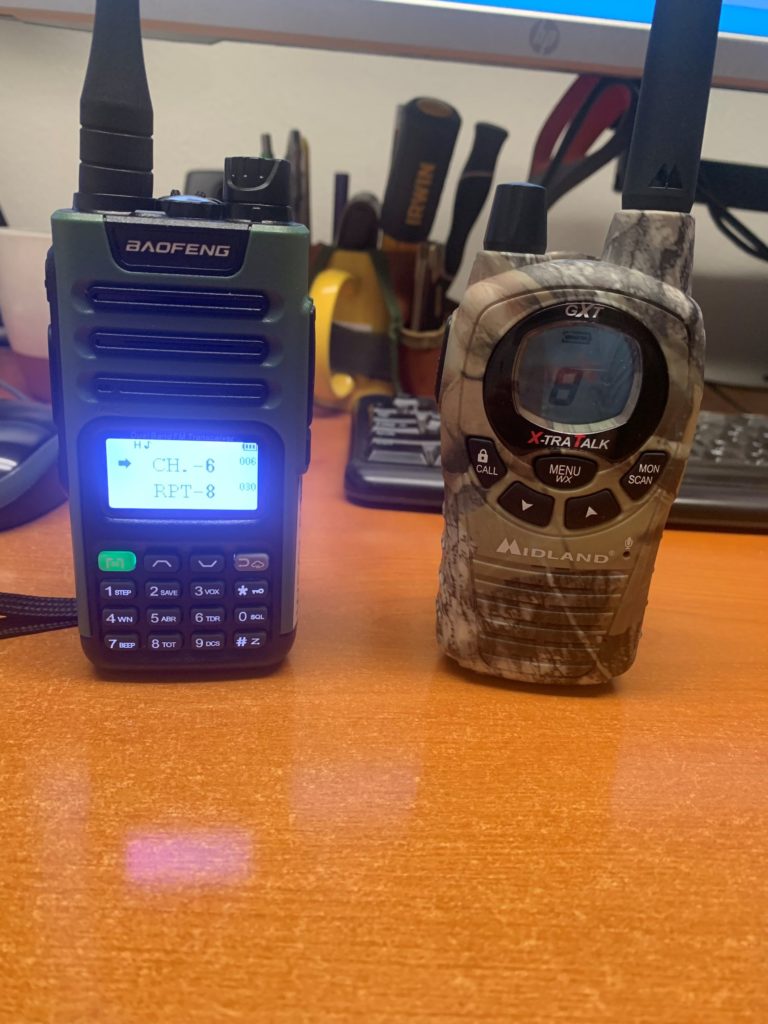In 2015, I got voluntold that I would be on a walking relay called Portland to Coast. The idea was that twelve of us would walk continuously from Portland to Seaside on the beach (128 miles). I was already training for the half marathon anyway so I did it. It was actually pretty fun.
Each leg was about 3-5 miles and there would be an exchange point. There would be bathrooms and refreshment at a minimum. Some of the major exchange points would also have food, showers a place to sleep and a radio operator. When you get into the mountains here there is no such thing as cellular service.
I thought that it was pretty cool that people would do all the work of setting up antennas and things and volunteer their time for something like this. What I didn’t really understand was that this was their time to compete as well. They were policing the course for the lost, stragglers and medical emergencies. The only way to get effective, real time communication was radio. I have now observed that many races have radio operators.

Going back a further, to about 2006 my current neighbors moved in. He is a former sheriff’s deputy and runs a police scanner. Since I live on Main St., I can hear all of the sirens when the when the vehicles turn west leaving the station (the siren sound is directional). Some times when there are a lot of vehicles I will go over and ask what is going on.
Next, came my techno-junk pursuit. I talk frequently about it, so I won’t go deeply into it. But, I was trying to figure out how to buy/build antennas for AM reception. I ran across an antenna advertised for short-wave usage. It was at that time that I realized that short-wave frequencies also included AM radio. So, I started to research this further.
I was actually reading the comments and reviews for the antenna that I purchased. One of the comments said something to the effect of ‘watch where you put that thing or you will end up with an Rocket Propelled Grenade in your window’. It was at that moment that I realized radio is a weapon. It is not the kind of weapon that hurts people, but it is communication that prevents friendly fire, a weapon of information.
Radio is a force multiplier, not a missile. Think of it like a shotgun choke. While one pellet might be effective, more would be better. So if the shot is concentrated on the target the more likely it will be lethal. On the other hand, sometimes having a more open choke is better, you have a better chance of hitting with a wider pattern. Radio frequencies are the same way. They have their advantages and disadvantages but make no mistake firing without a choke causes the shot to spray everywhere quickly.
Aside from being regulated by the FCC, no other outside infrastructure is necessary. Strictly speaking, it can be used without licensing either. In times of natural disaster, radio will be there regardless of internet, phone lines or cellular service. My wife even mentioned that we should get our own scanner. This is what spurned me to try out Software Defined Radio (SDR). As you know, I am still working on that but I can tune in a channel on the SDR and hear when I talk on GMRS channels. So, I am close, I just need to get the right configuration setup to listen to emergency broadcasts.
End Your Programming Routine: I don’t know if I will ever be a guy that sits in front of a radio talking to strangers at night. One video I watched recently said that developing scanning channels requires time. That is one thing that I feel like I have little of. But, radio does appeal to my technical, scientific and preparedness side. I definitely want to work on going a little deeper just for the ability to say that I know how to do it and can do it competently.

Recent Comments